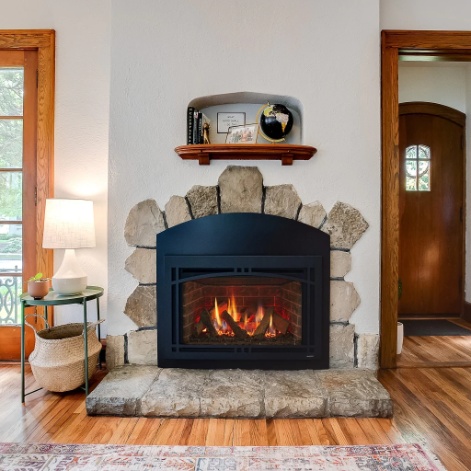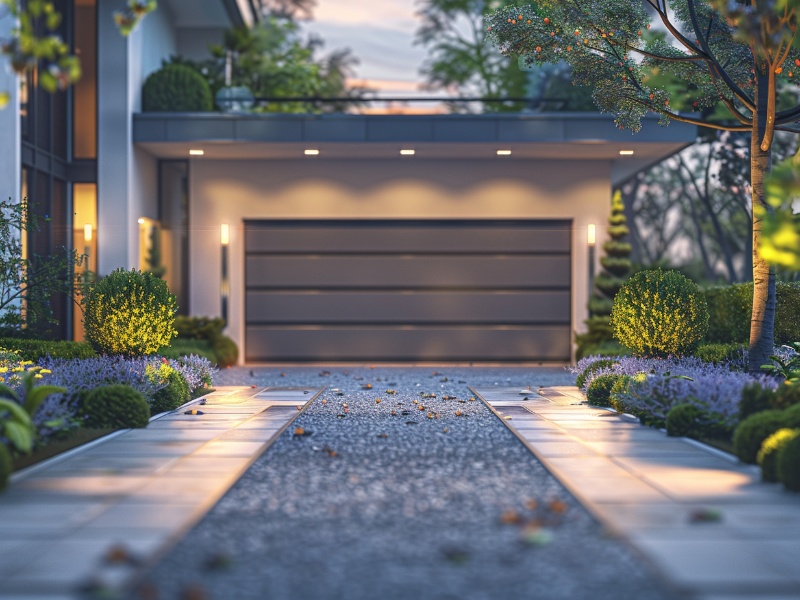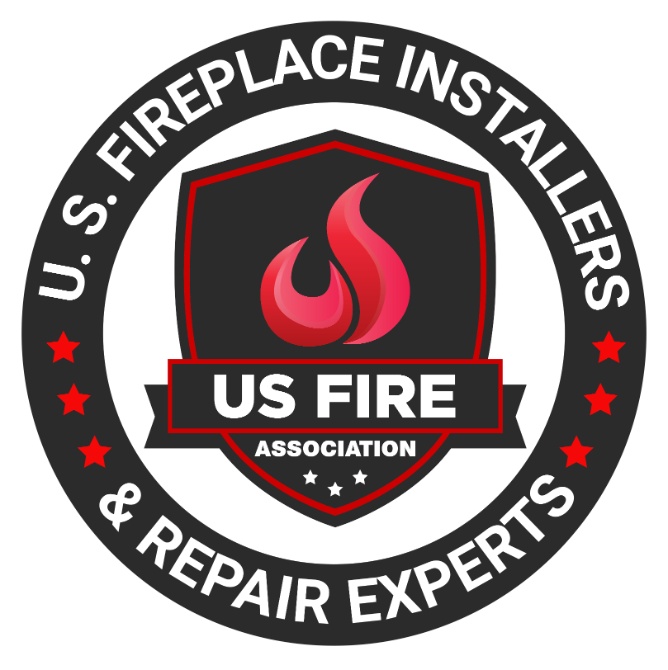Table of Contents
Fireplaces have long been a staple in homes, providing both warmth and ambiance. But does a fireplace really warm a house?
Let’s explore how fireplaces function, the different types available, and their efficiency in heating a house.
We’ll discuss the pros and cons of having a fireplace, as well as ways to make them more energy-efficient.
Uncover the truth about the beloved fireplace in your home.
What Is a Fireplace?
A fireplace is a heating source typically found in a home that provides warmth and creates a cozy ambiance.
Fireplaces come in various types, such as wood-burning, gas, electric, and ethanol, each offering unique benefits.
The crackling sounds of a wood-burning fireplace, the convenience of a gas fireplace, or the modern appeal of an electric option all add charm to a living space.
Beyond their functional aspect of heating homes, fireplaces enhance the aesthetic appeal of a room.
They often become a focal point that brings a sense of comfort and relaxation.
The construction of a fireplace, whether it’s a traditional brick design or a sleek modern insert, contributes greatly to the overall ambiance of a home.
This makes it a gathering place for family and friends to unwind and enjoy.
How Does a Fireplace Work?
A fireplace operates by burning fuel, such as wood or gas, to generate heat that warms the surrounding area.
The process of combustion within the fireplace plays a vital role in producing heat.
When the fuel ignites, it releases energy in the form of heat and light.
This heat is then transferred throughout the room through a combination of radiation, convection, and conduction.
Proper insulation around the fireplace helps retain heat within the room, preventing unnecessary heat loss.
Efficient venting is crucial for allowing combustion byproducts to safely exit the home. This ensures proper air circulation and maintains indoor air quality.
What Types of Fireplaces Are There?
There are various types of fireplaces available, including wood-burning, gas, and electric options, each offering unique benefits and design aesthetics.
- Wood-burning fireplaces are a traditional choice, providing rustic charm and natural ambiance with the crackling sounds and aroma of burning wood. While they offer excellent heating efficiency, they require regular maintenance, such as cleaning the chimney.
- On the other hand, gas fireplaces are convenient and easy to use, with options for direct venting or ventless models. They are efficient in heating and can be controlled with a simple switch or remote.
- Electric fireplaces are versatile, offering a range of designs from traditional mantels to sleek wall-mounted units. They are energy-efficient and easy to install, requiring only a standard power outlet.
Wood-Burning Fireplaces
Wood-burning fireplaces are a classic choice that offers a traditional ambiance and high heat output.
However, they require regular fuel replenishment and maintenance.
The reliance on firewood is a defining feature of wood-burning fireplaces.
The crackling sound and natural aroma enhance the cozy atmosphere they provide.
In terms of heat output capabilities, these fireplaces are known for their ability to efficiently warm a room, creating a welcoming environment during cold weather.
It’s essential to consider fuel consumption when using a wood-burning fireplace.
Proper firewood selection and maintenance play key roles in ensuring fuel efficiency and safety.
Regular cleaning of the chimney and proper installation are vital steps in maintaining a wood-burning fireplace’s functionality and performance.
Gas Fireplaces
Gas fireplaces are known for their convenience and efficiency, with options for vent-free models that offer cost-effective heating solutions.
These vent-free gas fireplaces not only provide a cozy ambiance but also boast high energy efficiency ratings.
This makes them a wise choice for homeowners looking to reduce their heating costs over time.
The vent-free design eliminates the need for a chimney or venting system, saving on installation expenses and maintenance.
This type of fireplace can help improve heating efficiency in your home.
It ensures that you stay warm and comfortable during the chilly winter months without breaking the bank.
The reduced installation costs and minimal maintenance requirements make vent-free gas fireplaces a practical and economical heating solution for many households.
Electric Fireplaces
Electric fireplaces offer versatility in design, providing aesthetic appeal while also being energy-efficient and incorporating advanced heating technology.
These innovative heating sources come in various styles, from traditional mantel designs to sleek wall-mounted units.
They enhance the décor of any room.
With features like adjustable flame brightness and color options, electric fireplaces create a cozy ambiance without the hassle of wood burning or gas logs.
Their energy-saving capabilities help reduce utility costs, as they produce heat efficiently without losing warmth through chimneys or vents.
Many modern electric fireplaces even come equipped with convenient remote controls and programmable settings for customized comfort.
Does a Fireplace Really Warm a House?
Fireplaces can indeed warm a house by increasing the temperature and providing a comfortable environment, especially during the colder winter months.
The radiant heat emanating from a fireplace not only raises the room’s temperature but also creates a cozy ambiance through its flickering flames.
This form of direct heat helps maintain a consistent and pleasant temperature in the immediate vicinity.
It ensures that occupants feel snug and relaxed.
Well-designed fireplaces can effectively distribute heat throughout the space.
This prevents cold spots and promotes a balanced climate indoors.
By efficiently controlling the fire’s intensity, homeowners can manage the room’s warmth to their liking.
This enhances comfort levels and optimizes indoor air quality.
Direct Heat vs. Radiant Heat
Fireplaces provide warmth through a combination of direct heat emission and radiant heat transfer.
This offers effective heating solutions for drafty areas.
By using direct heat emission, fireplaces emit warmth directly into the surrounding air.
This quickly raises the room’s temperature.
This method is especially beneficial for supplementing existing heating systems and offsetting heat loss in drafty rooms.
Radiant heat transfer allows fireplaces to emit infrared radiation that heats objects and surfaces in the room.
This maintains a consistent level of warmth.
This dual heat mechanism ensures that indoor spaces are not only heated efficiently but also have improved heat retention.
This creates a cozy and inviting atmosphere during colder months.
Location and Size of Fireplace
The location and size of a fireplace play a crucial role in its heating effectiveness.
This impacts room temperature and the overall construction of the house.
When strategically placed, a fireplace can act as a central source of heat.
It efficiently warms the entire space.
Depending on the dimensions of the fireplace, the heat distribution can vary.
This influences not only the comfort level but also energy efficiency.
Integrating a fireplace into a home construction or renovation project requires careful consideration of its placement.
This maximizes its heating potential while complementing the overall design aesthetic.
Properly positioning a fireplace can also add value to the property.
It enhances the functionality of the heating system, creating a cozy and inviting atmosphere in the home.
Insulation and Air Leakage
Proper insulation and prevention of air leakage are essential factors in maximizing the efficiency of a fireplace.
They help reduce energy costs associated with heating.
Well-insulated homes play a crucial role in minimizing heat loss and improving energy efficiency.
This ultimately leads to lower heating bills.
Draft prevention measures help maintain a consistent temperature indoors and prevent cold air infiltration.
This creates a more comfortable living environment. By sealing gaps and cracks around windows, doors, and vents, homeowners can reduce air leakage.
This ensures that the heat generated by the fireplace stays inside. It effectively reduces the workload on the heating system and saves energy.
Maintenance and Usage
Regular maintenance and proper usage of a fireplace are crucial for ensuring safety.
They optimize heating efficiency and minimize heating costs.
- Maintaining a fireplace involves several key steps to ensure consistent performance and prevent potential hazards. It is recommended to schedule annual inspections by a certified technician to check for any issues with the chimney, flue, or gas lines.
- Regular cleaning of the fireplace and chimney, including removing ash and soot buildup, is essential. This prevents blockages and improves airflow.
- Monitoring the condition of the fireplace doors, dampers, and seals is crucial. This prevents heat loss and ensures proper ventilation.
Adhering to these maintenance practices enhances safety measures.
It also contributes to extending the lifespan of the heating system and reducing overall heating expenses.
What Are the Benefits of Having a Fireplace?
Having a fireplace offers numerous benefits. These include providing additional heat, creating a cozy atmosphere, and even serving as a cooking source.
A fireplace not only supplements home heating, but it also adds a touch of warmth and comfort to the living space.
The crackling sound of burning wood and the dancing flames create a soothing ambiance.
This is perfect for relaxing on chilly evenings.
Fireplaces enable you to cook delicious meals through techniques like roasting, baking, or even grilling.
This makes them versatile in functionality.
The radiant heat generated by a fireplace contributes to a comfortable living environment.
It maintains indoor warmth during colder seasons, reducing the reliance on central heating systems.
This offers both practicality and charm to your home.
Provides Additional Heat
One of the key benefits of a fireplace is its ability to provide additional heat.
This increases the warmth and comfort level in a living space.
Fireplaces serve as valuable supplemental heating sources.
They efficiently distribute heat throughout a room.
With their heating capacity, they play a crucial role in elevating room temperature, especially during colder periods.
Fireplaces not only create a cozy ambiance but also contribute significantly to energy efficiency.
They reduce the dependence on central heating systems.
The radiant heat emitted by a fireplace can quickly warm up a space, offering a comforting retreat on chilly evenings.
Fireplaces are essential for enhancing warmth and comfort indoors.
Creates a Cozy Atmosphere
Fireplaces contribute to creating a cozy atmosphere by providing visual warmth, ambiance, and optimizing insulation properties for indoor comfort.
The aesthetic design of a fireplace adds a touch of elegance to a room.
It also serves as a focal point, drawing people in to gather around and enjoy its comforting glow.
In addition to the visual appeal, fireplaces play a crucial role in regulating indoor temperature.
They reduce heat loss, thus enhancing the overall insulation of a space.
This combination of aesthetic charm and functional warmth elevates the ambiance of any room.
It creates a welcoming and cozy environment that encourages relaxation and socialization.
Can Be Used for Cooking
Some fireplaces offer the versatility of being used for cooking.
They utilize different fuel options and leverage the hearth as a culinary space.
Fireplaces have served as integral cooking spaces throughout history.
They allow individuals to prepare meals with a unique smoky flavor.
The hearth, a traditional focal point, holds cultural significance as the heart of the home.
It serves as a gathering place for culinary gatherings.
Cooking in fireplaces can be done using various fuel sources such as wood, charcoal, and even gas.
This provides a range of options for different cooking techniques and flavors.
This timeless cooking method offers practicality.
It also adds a touch of nostalgia and charm to modern kitchens.
What Are the Drawbacks of Having a Fireplace?
While fireplaces offer benefits, they also come with drawbacks. These include maintenance requirements, safety hazards, and potential increases in energy costs.
Regular maintenance of a fireplace is essential to ensure safety and efficiency.
Built-up creosote in the chimney can lead to chimney fires.
Debris and blockages can hinder proper ventilation.
The use of a fireplace can contribute to higher energy bills.
Heat can escape through the chimney rather than warming the home.
It’s important to consider these factors before installing or regularly using a fireplace.
This helps mitigate any potential risks and costs associated with its upkeep.
Requires Maintenance and Cleaning
Fireplaces necessitate regular maintenance and cleaning to ensure optimal functionality.
Thank This is especially important in drafty environments that may affect heating equipment.
Regular maintenance tasks for fireplaces include cleaning the chimney to prevent creosote build-up.
Inspecting for any cracks or leaks in the fireplace structure is also essential. Thank
Ensuring proper ventilation avoids drafty conditions.
Cleaning protocols involve removing ash and debris from the fireplace.
Regularly checking and replacing the fireplace flue or damper is also necessary.
Addressing drafty conditions promptly can prevent heat loss.
This improves the efficiency of the fireplace while ensuring safe operation.
By following these maintenance routines, homeowners can enjoy a cozy and safe environment during colder months.
Can Be a Safety Hazard
Improper usage of fireplaces can pose safety hazards.
These include risks of carbon monoxide exposure and challenges related to heat retention in enclosed spaces.
Carbon monoxide is a colorless and odorless gas.
It can be produced when fuel is burned, such as in a fireplace.
This can lead to potential poisoning if not properly ventilated outdoors.
Inadequate ventilation can also result in the accumulation of harmful pollutants indoors.
This affects indoor air quality.
Effective carbon monoxide monitoring devices are essential.
They alert inhabitants of dangerous levels.
Proper ventilation practices, regular chimney inspections, and installation of heat-resistant barriers can help minimize the risks associated with heat retention in and around the fireplace.
Can Increase Energy Costs
Fireplaces may lead to increased energy costs if not used efficiently.
This impacts overall heating efficiency and the performance of the heating system.
When fireplaces are not operated effectively, they can result in heat loss.
This forces the heating system to work harder to maintain a comfortable temperature in the home.
This extra strain on the heating system can lead to higher energy consumption.
Ultimately, this increases monthly energy bills.
To optimize energy usage with fireplaces, homeowners can ensure the damper is closed when the fireplace is not in use.
This prevents heat from escaping.
Utilizing energy-efficient fireplace inserts and properly maintaining the fireplace ensures it operates at peak efficiency.
It is important to choose heating solutions that align with energy-saving practices.
This helps reduce overall energy consumption and costs.
How Can You Make Your Fireplace More Efficient?
Improving the efficiency of your fireplace can be achieved through the installation of a fireplace insert, proper insulation, and optimizing the heating solution for your home.
A key factor in enhancing fireplace efficiency is the installation of a fireplace insert.
This can significantly improve heat output and reduce heat loss. Fireplace inserts are designed to fit seamlessly into your existing fireplace.
They provide a more controlled and efficient source of heat.
Ensuring proper insulation around your fireplace and chimney can prevent heat from escaping.
This maximizes the warmth generated by your fireplace.
Selecting the right heating solution, whether it be wood, gas, or electric, is crucial in maintaining efficiency and reducing energy consumption.
By focusing on these strategies, you can create a more sustainable and cost-effective heating system for your home.
Install a Fireplace Insert
Installing a fireplace insert can improve heat transfer efficiency.
It can also enhance the property value of your home by modernizing the heating system.
By incorporating fireplace inserts, homeowners can experience a significant increase in the overall efficiency of their heating system.
These inserts are designed to maximize heat transfer by capturing and distributing warmth effectively throughout the room.
This ensures that every corner receives the desired level of comfort.
As a result, this enhancement contributes to a cozy living environment.
It also plays a key role in cutting down energy costs.
With the rise in property market value being linked to upgraded heating technologies, investing in fireplace inserts becomes a strategic move for homeowners looking to boost the worth of their homes.
Use a Fireplace Blower
Incorporating a fireplace blower can improve heat distribution and minimize heat loss.
This ensures efficient heating throughout the space.
By actively circulating the warm air produced by the fireplace, the blower helps push heat into different areas of the room.
This prevents pockets of cold spots and ensures a more uniform temperature.
This efficient heat distribution maximizes the heating potential of the fireplace.
It also reduces overall energy consumption, as the warmth is effectively utilized.
The utilization of a fireplace blower aids in heat retention within the room.
This prevents heat from escaping up the chimney.
It maintains a cozy and comfortable atmosphere for a longer period of time.
Properly Insulate Your Home
Effective insulation of your home plays a vital role in maximizing the efficiency of your fireplace.
It minimizes energy costs associated with heating.
Proper insulation not only helps in preventing drafts and maintaining a comfortable temperature.
It also aids in retaining the heat generated by your fireplace within your living space.
By creating a barrier that traps heat inside, insulation reduces the need for continuous heating.
This leads to significant energy savings over time.
This enhanced thermal efficiency benefits your wallet by lowering utility bills.
It also enhances the overall comfort and coziness of your home during the colder months.
“`html
Frequently Asked Questions
1. What is a fireplace?
A fireplace is a heating source typically found in homes that provides warmth and creates a cozy ambiance.
2. How does a fireplace work?
A fireplace operates by burning fuel, such as wood or gas, to produce heat that warms the surrounding area through combustion.
3. What are the different types of fireplaces?
There are various types of fireplaces, including wood-burning, gas, electric, and ethanol, each with unique benefits and designs.
4. Can a fireplace really warm a house?
Yes, fireplaces can warm a house by increasing the temperature in the room and providing a comfortable environment, especially during colder months.
5. What are the benefits of having a fireplace?
Fireplaces provide additional heat, create a cozy atmosphere, and can even be used for cooking, enhancing indoor comfort and enjoyment.
6. What are the drawbacks of having a fireplace?
Some drawbacks include maintenance requirements, potential safety hazards, and possible increases in energy costs if not used efficiently.
7. How can I make my fireplace more energy-efficient?
You can improve efficiency by installing a fireplace insert, ensuring proper insulation, and optimizing the heating solution for your home.
8. What maintenance is required for fireplaces?
Regular maintenance includes annual inspections, cleaning of ash and soot, and checking for any cracks or leaks in the fireplace structure.
9. Are gas fireplaces safer than wood-burning fireplaces?
Gas fireplaces can be safer due to their efficient design and fewer emissions, but all fireplaces require proper usage and maintenance to ensure safety.
10. Can I use my fireplace for cooking?
Yes, some fireplaces can be used for cooking, utilizing different fuel options and cooking techniques to prepare meals.
Latest Articles

What Is An NG (Natural Gas) Indicator And Why You Need It For Your Fireplace
Table of Contents1 Understanding Natural Gas Fireplaces2 What is an NG Indicator?3 Importance of NG Indicators for Safety4 Types of NG Indicators5 Installation and Maintenance of NG Indicators6 Signs of a Faulty NG Indicator7 Frequently Asked Questions Natural gas fireplaces are a favored option among numerous homeowners due to their convenience and effectiveness. But, what is an NG (Natural Gas) indicator and why you need it for your fireplace? It is imperative to comprehend how they function and the significance of having an NG (Natural Gas) indicator for safety purposes. This article delves into the definition and significance of NG indicators. We will discuss the potential hazards associated with the absence of one and the various types of indicators accessible. Also, we will discuss installation and maintenance recommendations, and methods to recognize and rectify issues with malfunctioning indicators. Stay well-informed and ensure the safety of your home by referring to this exhaustive guide. Understanding Natural Gas Fireplaces Natural gas fireplaces serve as an efficient and convenient heating option for numerous households. They utilize natural gas as a fuel source to deliver consistent warmth and ambiance. How They Work and Why They Need NG Indicators The operation of natural gas fireplaces involves igniting natural gas to generate heat. This process requires diligent monitoring to ensure both safety and efficiency, a task facilitated by the use of NG indicators. NG indicators play a critical role in detecting potential gas leaks. They enable residents to promptly address and mitigate any associated hazards. Through continuous monitoring of gas levels and providing timely warnings and alerts, NG indicators uphold a secure indoor environment. It is imperative to ensure that these indicators function properly to facilitate the effective operation of natural gas fireplaces. This helps mitigate the inherent risks linked to gas leaks. What is an NG Indicator? An NG indicator is a specialized device equipped with advanced sensors and technology. It is specifically designed to detect natural gas leaks and monitor gas pressure in appliances, such as fireplaces. Definition and Purpose The NG indicator functions as a detector that monitors gas appliances for potential leaks. It provides essential functionality to ensure safety in households utilizing natural gas. These detectors play a crucial role in protecting residences by notifying occupants of dangerous gas leaks long before they escalate into perilous situations. Through continuous monitoring of gas levels in the vicinity, NG indicators offer an additional layer of protection. This is particularly important in properties that rely on gas-operated fireplaces or stoves. These devices not only help avert potential disasters but also enhance the overall peace of mind of homeowners. They assure them that their living spaces are equipped with reliable safety features. Importance of NG Indicators for Safety Natural gas indicators are essential for maintaining safety in households equipped with natural gas appliances. These devices serve as a proactive measure to promptly detect gas leaks. This offers homeowners a sense of security and assurance. Potential Dangers of Not Having an NG Indicator The absence of an NG indicator in residences equipped with natural gas appliances can pose significant hazards. This includes the risk of undetected gas leaks , carbon monoxide poisoning , and pilot outages that may lead to dangerous situations. These potential risks can profoundly impact indoor air quality. They directly influence the health and safety of individuals residing in the household. Undetected gas leaks can go unnoticed, gradually permeating the air and creating a potentially explosive environment. Insufficient ventilation from undetected exposure to carbon monoxide can lead to serious health complications. These range from mild symptoms such as dizziness to fatal poisoning. Without proper monitoring from an NG indicator, families are left susceptible to these concealed threats. This underscores the critical importance of implementing proactive measures to mitigate such risks. Types of NG Indicators Indicators for Natural Gas (NG) are available in diverse types. Each presents distinct detection capabilities tailored to specific requirements, encompassing both manual and automated alternatives. Manual vs. Automatic Indicators Manual NG indicators require user intervention for monitoring gas levels and identifying leaks. On the other hand, automatic indicators employ sophisticated technology to deliver continuous, real-time monitoring. This heightened efficiency and oversight enhance safety protocols. Conventional manual indicators rely on individuals to physically inspect and evaluate gas levels periodically. This renders them more susceptible to human errors. Conversely, automatic indicators feature sensors capable of promptly detecting even the most minute fluctuations in gas levels. This establishes a more dependable and precise monitoring mechanism. Automatic indicators can activate alerts and shut-off systems upon detecting a leak. This ensures immediate action to avert potential hazards. This advanced technology enhances safety protocols and instills a sense of command and assurance among users. Installation and Maintenance of NG Indicators The reliable and accurate performance of NG indicators necessitates proper installation and consistent maintenance. This often entails professional installation and adherence to recommended service guidelines. Proper Installation and Regular Maintenance Tips The proper installation of NG indicators involves adhering to the specifications in the user manual. Maintenance protocols entail strict adherence to a predetermined maintenance schedule to ensure sustained operational efficiency. During the installation phase, it is imperative to verify that the NG indicators are securely affixed in the designated location as stipulated by the manufacturer. Crucial steps include confirming power source compatibility and ensuring proper grounding of the device to optimize performance. Calibration of the indicator must be executed meticulously to ensure precise readings. Regarding maintenance, essential practices include regular inspection for signs of wear, thorough cleaning of the indicator components, and routine functionality tests. By allocating time to a consistent maintenance regimen, the NG indicator can operate with optimal efficiency over an extended duration. Signs of a Faulty NG Indicator Recognizing indicators of a malfunctioning NG indicator is essential for upholding safety and performance standards. Inaccuracies and detection issues can undermine the efficacy of these devices. Identifying and Addressing Issues The process of identifying and addressing issues related to NG (natural gas) indicators requires a systematic troubleshooting approach. This ensures their optimal performance

What You Need To Know About Gas Log Set Safety And Installation Considerations
Table of Contents1 Understanding Gas Log Sets2 Safety Considerations for Gas Log Sets3 Installation Guidelines for Gas Log Sets4 Maintaining and Troubleshooting Gas Log Sets5 Frequently Asked Questions Gas log sets are a favored option among homeowners seeking to enjoy the comfort and atmosphere of a conventional fireplace without the inconvenience of wood. This article tells you what you need to know about gas log set safety and installation considerations. Before incorporating one into your residence, it is imperative to understand the safety considerations associated with their use. This discussion delves into the potential hazards linked with gas log sets. It presents crucial precautions to uphold the safety of your home. Also, it outlines proper installation procedures and offers insight into common errors to avoid. Finally, it provides advice on maintenance and troubleshooting. Gain comprehensive knowledge on gas log set safety and installation considerations. Understanding Gas Log Sets Comprehending gas log sets is essential for individuals seeking to elevate their fireplace experience, and for gas lag set safety and installation. These heating appliances can operate on either natural gas or propane. In addition, they are available in a range of styles, including vented, ventless, and vent-free options. They provide an array of benefits and customization opportunities through various fireplace accessories. What are Gas Log Sets? Gas log sets are meticulously crafted artificial logs. They are designed to imitate the appearance and functionality of authentic wood logs within fireplaces. These gas log sets typically consist of ceramic or refractory concrete logs that have been skillfully molded and painted. This allows them to replicate the natural grain and texture of real wood. The logs are arranged in various configurations within the fireplace. They establish a realistic and welcoming ambiance. In addition to the logs, gas log sets often include fireplace accessories such as glowing embers. Accessories also include decorative stones, and even pine cones to enhance the overall aesthetic appeal. Homeowners can select from an array of placement options. These include traditional wood stack, cascading driftwood, or a contemporary geometric arrangement. Homeowners can align their preferred style and design preferences. Safety Considerations for Gas Log Sets Safety considerations for gas log sets are of utmost importance to guarantee a secure and pleasant fireplace experience. It is essential to address potential hazards such as carbon monoxide exposure, gas leaks, and fire safety to maintain a safe environment for homeowners. Potential Hazards and Precautions Gas log sets come with potential hazards that must be taken seriously, including the risks of gas leaks, carbon monoxide poisoning, and fire incidents. It is imperative to establish and adhere to rigorous safety measures to ensure the well-being of individuals and properties involved in the use of gas log sets. Gas leaks represent a significant hazard when utilizing gas log sets. They can result in the accumulation of combustible gas within the premises, heightening the possibility of explosions or fires. Carbon monoxide, an insidious gas generated during incomplete combustion, poses a grave threat due to its colorless and odorless nature, making it undetectable without proper monitoring. To address these risks effectively, it is vital to install carbon monoxide detectors and gas leak sensors in the vicinity of the gas logs. Routine maintenance checks on the gas log system, including cleaning and inspection procedures, are critical to ensure safe operations and the prompt identification of potential issues. In case of a gas leak or suspected presence of carbon monoxide, immediate evacuation of the affected area is paramount, followed by prompt contact with emergency services. Recognizing the distinct odor of rotten eggs associated with natural gas can serve as an early warning sign, prompting swift actions to avert any potential accidents. Installation Guidelines for Gas Log Sets The installation of a gas log set necessitates meticulous planning and strict adherence to specific guidelines. This includes verifying a secure gas connection, ensuring proper gas lines are in place, and complying with local building codes. Often, the complexity of these requirements may require the expertise of a certified technician. Proper Installation Techniques The appropriate installation procedures for gas log sets involve the secure connection of gas lines, meticulous adherence to installation manuals, and strict compliance with local building codes. It is imperative to prioritize the guarantee of secure gas connections to avert leaks and potential safety hazards. During the installation of gas log sets, utilizing suitable sealants and fittings is essential to establish a tightly sealed connection. The correct installation of gas lines is critical for both the safety and operational efficacy of the gas log set. Reference to the installation manual is highly advisable for detailed, step-by-step guidance to prevent inaccuracies and ensure the successful establishment of the gas log set. Consistently adhering to building codes and regulations upholds safety standards. Seeking guidance and confirmation from a certified technician before and after installation can offer invaluable support and assurance throughout the process. Common Installation Mistakes to Avoid It is imperative to avoid common installation errors to ensure the secure and effective operation of gas log sets. This includes verifying proper gas connections and compliance with building codes. Improper gas connections can result in leaks and potential hazards, underscoring the importance of verifying the tightness and correct alignment of all fittings. Failure to adhere to building codes can lead to structural complications, penalties for non-compliance, or even safety concerns. To prevent these oversights, it is advised to consult the manufacturer’s installation guidelines and strictly adhere to local regulations. Engaging a certified technician for the installation of gas log sets guarantees that the procedure is carried out accurately and securely. This provides assurance that the system is functioning as intended. Maintaining and Troubleshooting Gas Log Sets Regular maintenance and troubleshooting of gas log sets are imperative to uphold their optimal performance and safety. This includes thorough examination of the pilot light, pilot assembly, and other gas appliances to preserve heating efficiency and promptly resolve any arising issues. Tips for Maintenance and Repair Ensuring the proper maintenance of your gas log set necessitates conducting

Key Considerations For Using Compressed Liquid Propane In Fireplace Installation
Table of Contents1 What is Compressed Liquid Propane?2 Benefits of Using Compressed Liquid Propane in Fireplaces3 Safety Precautions for Installing Compressed Liquid Propane Fireplaces4 Installation Process for Compressed Liquid Propane Fireplaces5 Maintenance and Care for Compressed Liquid Propane Fireplaces6 Alternative Fuel Options for Fireplaces7 Frequently Asked Questions If you are contemplating the use of compressed liquid propane in your fireplace installation, this discussion will delve into the advantages of adopting this alternative fuel option. These benefits include enhanced efficiency, cost savings, and important safety precautions to consider. Furthermore, a detailed step-by-step guide on the installation process will be provided, along with recommendations for maintenance and care. A comparison of various fuel options for fireplaces will also be conducted to assist you in making an informed decision. We encourage you to stay engaged to gain insights into optimizing your fireplace’s capabilities with compressed liquid propane. What is Compressed Liquid Propane? Compressed Liquid Propane is a versatile energy source contained in a high-pressure propane tank. It finds extensive utility in both residential and commercial settings, prominently including fireplaces. Recognized for its convenience and efficiency, Compressed Liquid Propane emerges as a favored option for heating residential spaces and facilitating culinary pursuits across various environments. Additionally, it serves as a viable fuel substitute in vehicular contexts, portable cooktops, and outdoor grilling scenarios due to its propensity for clean combustion. The attribute of portability, coupled with ease of storage, positions Compressed Liquid Propane as an optimal energy source for individuals residing off the conventional grid. It is also great for engaging in outdoor activities such as camping and recreational vehicle (RV) travel. Moreover, the high energy density inherent to Compressed Liquid Propane renders it a dependable choice for sustaining generators during instances of power disruptions. Benefits of Using Compressed Liquid Propane in Fireplaces Utilizing Compressed Liquid Propane for fireplace installation presents several benefits. These include enhanced fuel efficiency, convenience, cost-effectiveness, and a favorable environmental footprint. These attributes render it a recommended option for heating solutions, applicable to both on-grid and off-grid settings. Efficiency and Cost Savings The utilization of Compressed Liquid Propane in fireplaces offers significant advantages, notably in terms of high fuel efficiency and cost-effectiveness. These attributes are underscored by the exceptional BTU rating and overall heating efficiency of Compressed Liquid Propane. The elevated fuel efficiency exhibited by Compressed Liquid Propane fireplaces necessitates less fuel to generate the same level of heat compared to traditional wood-burning fireplaces or electric heating systems. Consequently, homeowners can realize cost savings on their heating expenditures over an extended period. Moreover, the clean-burning characteristics of propane minimize maintenance costs linked to soot and ash cleanup. This further enhances the cost-effectiveness of employing propane fireplaces. Safety Precautions for Installing Compressed Liquid Propane Fireplaces Ensuring safety is of utmost importance during the installation of Compressed Liquid Propane fireplaces. This requires strict adherence to safety regulations, meticulous attention to proper ventilation requirements, careful control of ignition sources, and the incorporation of carbon monoxide and gas leak detection systems. Important Safety Measures Essential safety protocols for the installation of Compressed Liquid Propane fireplaces encompass adherence to fire safety regulations. Engaging in professional assessments and employing sophisticated gas leak and carbon monoxide detection mechanisms is crucial. Professional evaluations play a critical role in identifying any prospective hazards or irregularities within the fireplace infrastructure. These assessments are vital in ensuring the operational integrity of all components and compliance with safety protocols. Routine inspections serve to forestall potential fire incidents, gas discharges, or carbon monoxide emissions that could pose significant threats to both the property and individuals in the vicinity. The utilization of advanced gas leak and carbon monoxide detection systems serves as an additional safeguard by promptly notifying occupants of any elevated levels of these hazardous gases. Installation Process for Compressed Liquid Propane Fireplaces The installation procedure for Compressed Liquid Propane fireplaces encompasses several critical steps. These include: Adhering to installation guidelines Correctly positioning the propane tank Ensuring precise gas line installation Optimizing heat output Monitoring pressure regulation Establishing the pilot light Step-by-Step Guide The installation process of Compressed Liquid Propane fireplaces involves a systematic approach. This begins with the construction of the firebox, followed by the installation of the gas control valve, setup of the ignition system, design of the flue, and verification of a suitable combustion air supply. The construction of the firebox assumes critical importance as it serves as the foundation of the fireplace structure. It securely holds the combustible materials in place. Subsequently, the gas control valve plays a key role in managing the propane flow, guaranteeing safe and efficient operation. The installation of the ignition system facilitates convenient and reliable fire initiation. Designing the flue is a necessary step to direct exhaust gases outside, thus preventing their accumulation indoors. Moreover, ensuring a proper combustion air supply is essential to sustain optimal burning conditions and enhance fuel consumption efficiency. Each component contributes significantly to the functionality and safety of the fireplace installation process. This underscores the importance of meticulous attention to detail and adherence to established protocols. Maintenance and Care for Compressed Liquid Propane Fireplaces Consistent maintenance and attention to Compressed Liquid Propane fireplaces are imperative to guarantee their optimal functionality. This includes adherence to prescribed maintenance protocols, regular chimney upkeep, prevention of soot accumulation, and scheduling of routine propane deliveries and professional inspections. Tips for Keeping Your Fireplace in Good Condition For the maintenance of your Compressed Liquid Propane fireplace, it is essential to conduct regular checks on ignition sources. Monitor flame appearance, clean the gas burner and pilot assembly, and verify the correct operation of the safety shut-off valve. The inspection of ignition sources requires a detailed examination of the electronic igniter. This helps identify any signs of damage or corrosion and ensures proper sparking upon activation. Monitoring flame appearance involves observing a consistent blue flame with minimal flickering, which signifies efficient combustion. Cleaning the gas burner and pilot assembly can be performed using a soft brush or compressed air to eliminate any dirt or debris that may
